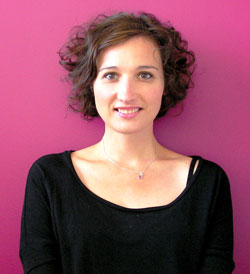
Robohub.org
Day Two at euRathlon 2015: Video recap
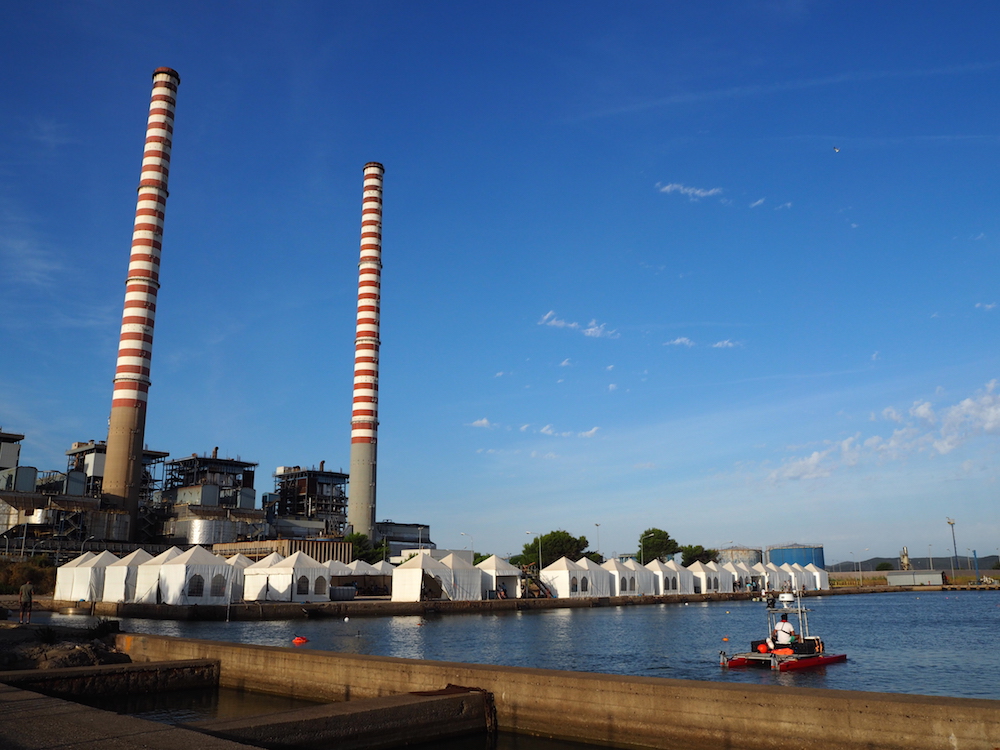
Sea scenarios take place in the harbour of the Enel power plant, Piombino, Italy. Image: euRathlon
Inspired by the 2011 Fukushima accident, euRathlon is a civilian outdoor robotics competition focused on realistic cooperative disaster response scenarios. On the second day of single-domain trials, the land, sea and air robots faced three new challenges. Sea robots had to search for a leak and close a valve, while land robots had to inspect the inside of the building and close the valves in the machine room. Aerial robots had to inspect the building and look for a safe path to the machine room for a land robot. The winners of the first euRathlon 2015 trials were unveiled and a series of robotics talks took place at Piombino Castle.
Watch the Day Two recap video here:
Sea Trial (S2): Leak localisation and valve closing
In this second trial, the marine robots had to localise a leaking underwater pipe and close the valve associated to it. The leak was represented by a plume of orange buoys and an orange rectangular marker on one of the four yellow pipes. Once the leaking pipe was found, the robot had to follow it to reach the underwater structure where the valve was mounted. Finally, the robot had to close the valve to stop the hypothetical leak.
As in previous days, the teams had to work under poor water visibility conditions, making it harder to find the leak and close the valve. Teams were only allowed to tele-operate their AUVs (Autonomous Underwater Vehicles) for closing the valve.
Eleven teams participated in this sea trial, competing in parallel in two different areas. The teams were AUV Team TomKyle, Robdos Team , ENSTA Bretagne Team 1, ENSTA Bretagne Team 2, Team Nessie, Universitat de Girona , AUGA, AVORA, UNIFI, ICARUS and OUBOT.
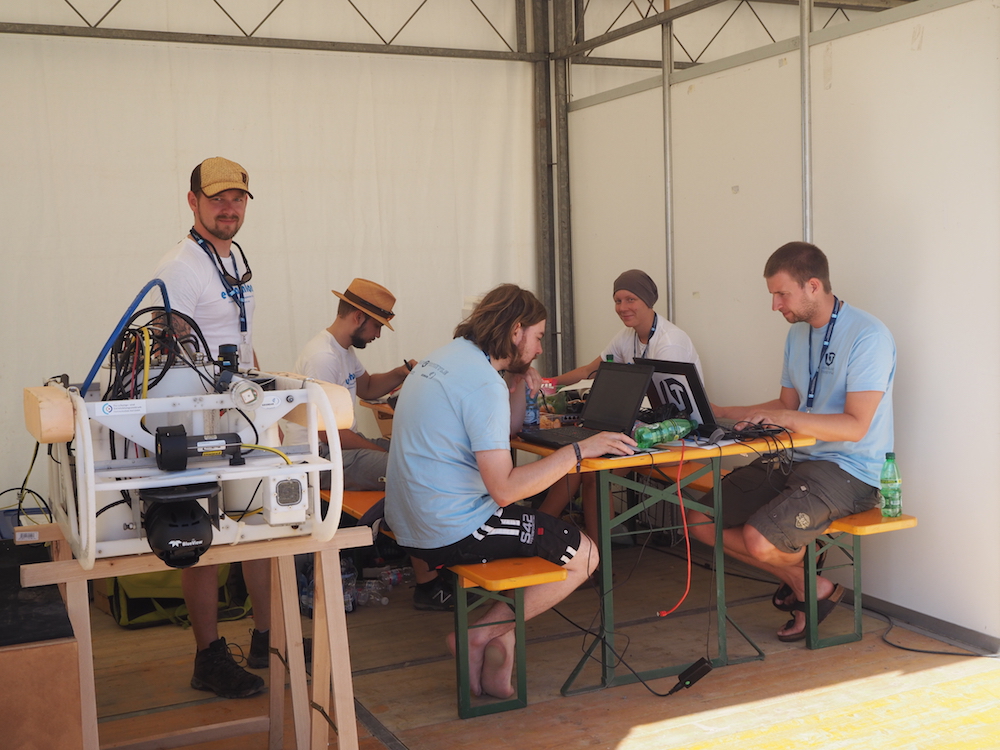
AUV Team Tomkyle (University of Applied Sciences Kiel) preparing for the second sea trial. Photo credits: euRathlon
Land Trial (L2): Mobile Manipulation (valves closing)
In the mobile manipulation land trial, the robots had to reach the machine room inside the building. Inside the machine room there were 4 valves, a canister containing water that simulated contaminated material and a barrel. The land robots had to close a minimum of one valve. They were also required to pick up the canister containing the “hazardous” substance, move it into the barrel, and then cover the barrel with a lid.
The seven teams that participated in this trial were Bebot, B.R.A.I.N. Robots, ENSTA Bretagne Team 1, ENSTA Bretagne Team 2, Cobham, ICARUS and SARRUS.
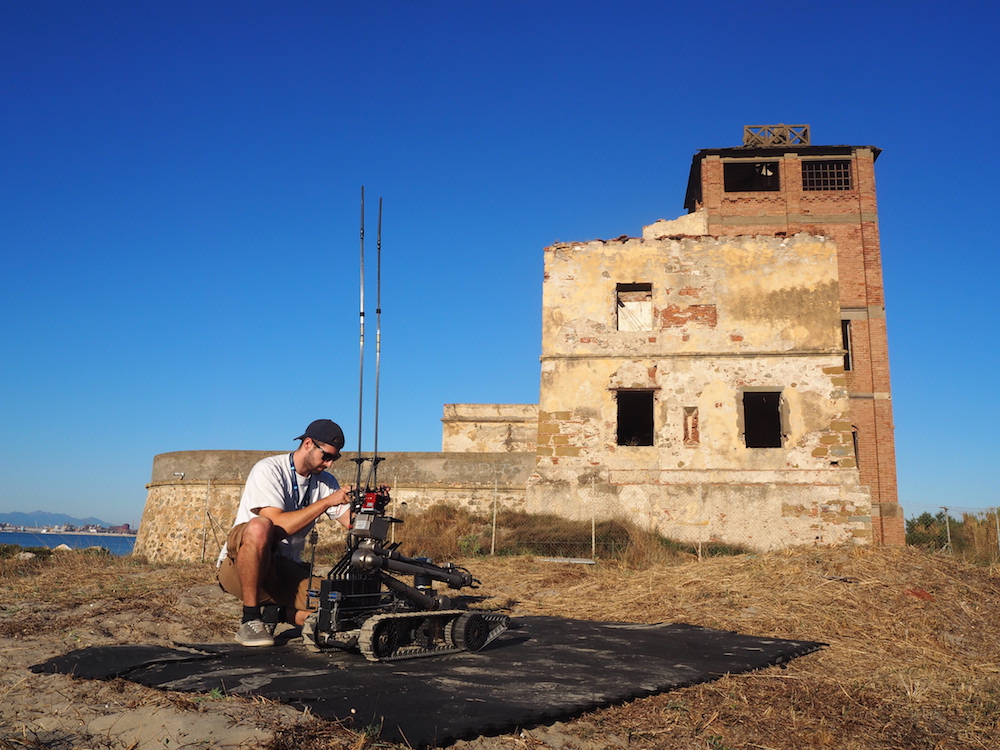
Team Bebot (Bern University of Applied Sciences) setting things up before starting the second land trial . Image: euRathlon
Air Trial (A2): Aerial reconnaissance inside a building
In the second air trial, aerial robots performed a reconnaissance mission of the building in order to increase the situational awareness of the emergency response team. For this purpose, the robots had to enter the building and find a safe path to the machine room for a land robot. The UAV (Unmanned Aerial Vehicle) had to create a map and localise objects of potential interest (OPIs) that marked obstacles and blocked paths that would limit access for a ground robot.
Due to the complexity of flying inside a building (which also limits the size of the UAV), only three teams participated: ENSTA Bretagne Team 1, ENSTA Bretagne Team 2 and ICARUS. This last team opted for inspecting the inside of the building through the windows using a thermal camera.
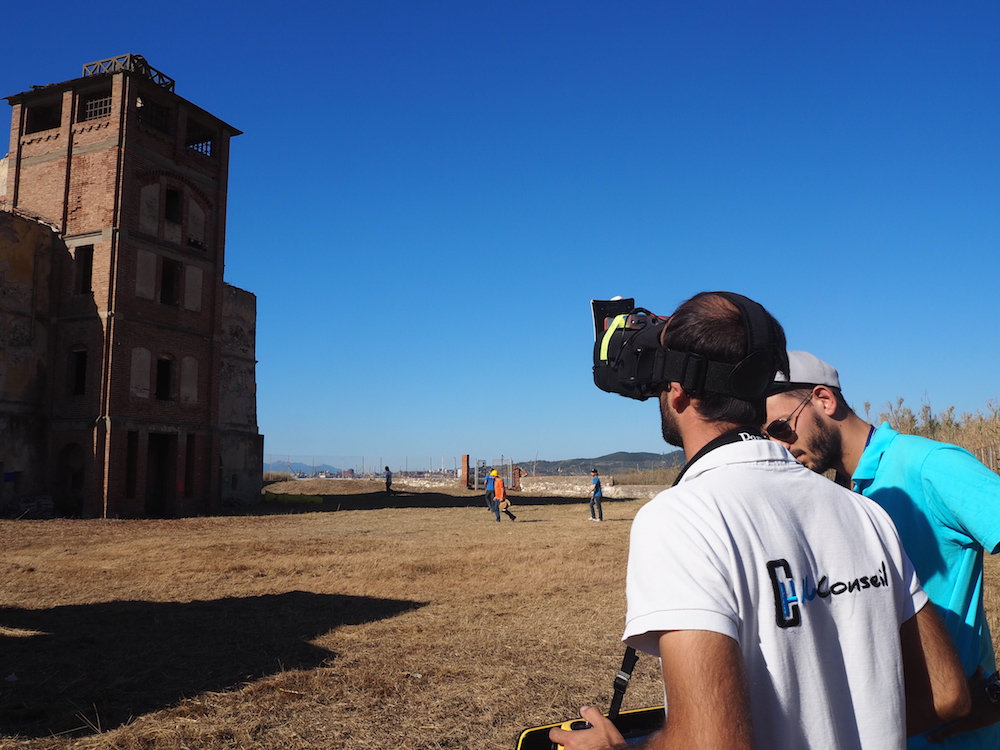
ENSTA Bretagne Team 2 performing the aerial reconnaissance inside the building. Image: euRathlon
Robotics talks
As part of euRathlon 2015, a series of robotics talks took place in the evening at Piombino Castle. On Sunday, Prof Alan Winfield (UWE Bristol, Bristol Robotics Laboratory), Dr Anne Bajart (EU Commission Project Officer) and Dr Gabriele Ferri (CMRE) presented the euRathlon project to the audience. This introduction was followed by a talk on robotics for underwater archaeology by archaeologist Pamela Gambogi (Soprintendenza dei Beni Archeologici della Toscana) and Prof Andrea Caiti (ISME, University of Pisa). Monday’s talks also featured another group of exceptional speakers: Prof Paolo Dario (Scuola Sant’Anna of Pisa) presented the Robot-Era project and the Biorobotics Institute and Dr Nikos Tsagaraskis (IIT, Genova) talked about the WALK-MAN project and their experience participating in the DARPA Robotics Challenge with their humanoid robot.
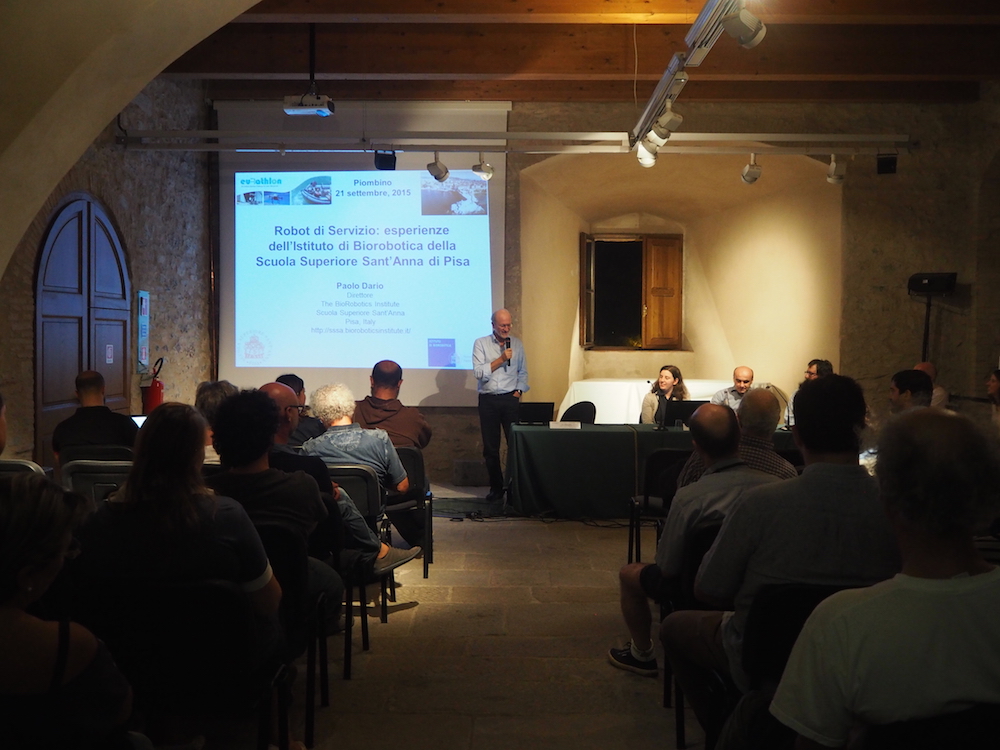
Prof Paolo Dario (Scuola Sant’Anna of Pisa) presenting on the Biorobotics Institute. Image: euRathlon
Winners of euRathlon 2015 Trials (A1, S1, L1)
The winners of the first euRathlon 2015 trials were:
- Land Trial (L1): Reconnaissance in urban structure. Shared 1st place – Bebot / Cobham, 3rd – SARRUS
-
Sea Trial (S1): Navigation and environmental survey. 1st – Universitat de Girona, 2nd – ENSTA Bretagne Team 1, 3rd – AUGA, 4th – ICARUS, 5th – AUV Team TomKyle
- Air Trial (A1): Aerial detection and mapping. 1st – ICARUS, 2nd – ISEP/INESC TEC, shared 3rd – ENSTA Bretagne Team 1 / ENSTA Bretagne Team 2
Don’t miss tomorrow’s Day Three recap for the results of the second day of trials and the start of the two-domain Sub-Challenges!
Missed coverage of some of the earlier challenges? Find it here.
[Correction: An earlier version of this post incorrectly noted the order of the Sea Trial Winners.]
tags: c-Events, Competition-Challenge, euRathlon, euRathlon 2015, field robotics
